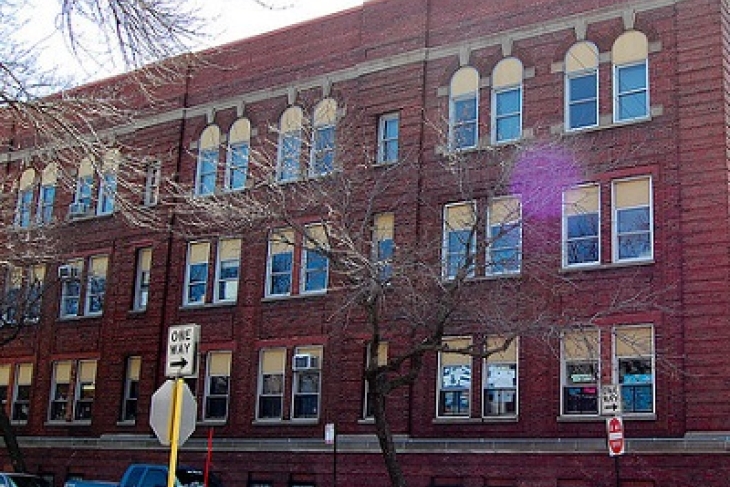I recently wrote about exciting new charter school results in Washington, D.C.. More kids are in high-performing charters, the number of high-performing charters is growing, and the number of struggling charters is shrinking.
But why?
For lots of reasons; D.C. has great school operators that are expanding; the charter law is quite good; the city has valuable support organizations; and public support has helped insulate the sector from unfounded attacks.
But among the most important factors is strong authorizing. That’s why you should read the new case study of the D.C. Public Charter School Board (PCSB).
By way of background, PCSB is regarded as one of the nation’s ablest authorizers. It’s a “single-purpose entity,” meaning that it only does charter authorizing, and its schools educate nearly half of D.C.’s public-school students. (And my Bellwether colleague Sara Mead is a member of its board.)
The report provides solid information on PCSB’s history, structure, schools portfolio, activities, processes, budget, staffing, and governance. Charter authorizing across the nation would improve (and charter performance would improve as a result) if PCSB’s lessons were widely adopted.
Even if you’re not as devoted to chartering as I am, you might want to give the report a look. Charter market share is significant and growing in most big cities, meaning authorizing will have a major bearing on the future of urban public schooling.
In my view, the report’s key shortcoming is that it ignores The Big Question: Since the D.C. charter sector produces several additional months of learning annually for its kids, educates nearly half of D.C. students, has very long waitlists, and continues to grow, and since DCPS continues to struggle, how is PCSB preparing to become the dominant public education provider in the nation’s capital?
Unfortunately, this goes unanswered.
(I’m told, however, that the pages of Education Next will soon have a fascinating debate on this very subject in the not-too-distant future.)
With that said, here are some of the report’s highlights:
- Serving all kids. D.C. charters serve a higher percentage of low-income (72 percent vs. 62 percent) and African American students (83 percent vs. 69 percent) than the district. Charters also serve virtually identical percentages of Hispanic (12 percent vs. 13 percent), special-education (12 percent vs. 14 percent), and ELL (8 percent vs. 9 percent) students. By contrast, the district’s white enrollment is five times higher (16 percent vs. 3 percent) than the charter sector’s. A cynic might ask the district why it’s disproportionately serving the city’s affluent, non-minority students.
- Assessing school quality. PCSB has a smart, user-friendly, three-tier system for rating its schools and informing its high-stakes decisions.
- Tough “front-end” accountability. PCSB sets a high bar for applicants. Its “Tier-I-on-Day-One” approach leads it to approve only proposals that look ready to succeed at the highest levels from the very start. PCSB’s strong “front-end” accountability process also includes staff “calibration” training to ensure assessments of applicants are consistent, rigorous interviews and site visits to assess applicants’ capacity, and opportunities for public testimony.
- Differentiated applications. PCSB has two application tracks: one for those starting a first school, and one for those who’ve previously run high-performing charters. The expedited “experienced-operator” track facilitates the swift creation of great schools.
- Strong internal practices. PCSB employs a cloud-based system for collecting and making available public documents; enrollment specialists work with students displaced by school closures; a recent internal reorganization better develops and deploys functional expertise; and the use of social media disseminates key school information.
The report does, however, highlight a few practices worth keeping an eye on—in D.C. and beyond.
- The mystery caller. PCSB takes care to ensure its student body reflects the city’s demographics; some of its strategies along these lines are commendable. For example, its “equity reports” provide disaggregated data on discipline and mid-year withdrawals. But through its “mystery caller” program, PCSB staff members call schools and pretend to be “parents of students with disabilities seeking enrollment.” Implemented well, this kind of program can help make sure charters aren’t dissuading high-need prospective students from registering. Implemented clumsily, it could verge on entrapment and/or discourage schools from providing the best advice to families.
- Permission to promote. PCSB reviews schools’ marketing information to make sure no school discourages applicants (by, for instance, asking if a student has a disability during the enrollment process). Executed with discretion, this approach poses no problem. But might some future authorizer prohibit a school’s boasting of its high academic standards in fear that academically struggling students might be intimidated?
- Differentiated accountability. Standardizing accountability, as PCSB has done with its performance frameworks, has big upsides. For example, schools are assessed using similar measures, and the public can easily compare schools. When PCSB decides to close a persistently underperforming school, it has a strong defense against “arbitrary-and-capricious” claims. But too much standardization can inhibit innovation and, if not kept in check, lead to homogenization.
A future post will consider what the performance and progress of D.C.’s charter sector might mean for public education in the nation’s capital.



